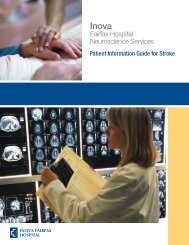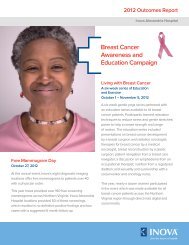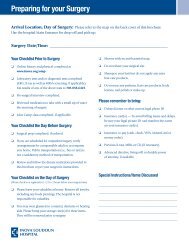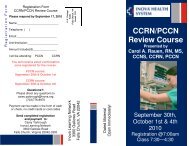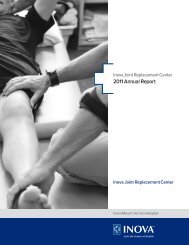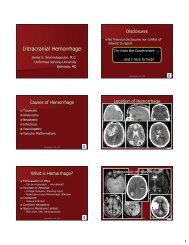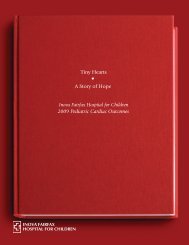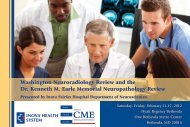Fungal and Parasitic Infections of the CNS - Inova Health System
Fungal and Parasitic Infections of the CNS - Inova Health System
Fungal and Parasitic Infections of the CNS - Inova Health System
You also want an ePaper? Increase the reach of your titles
YUMPU automatically turns print PDFs into web optimized ePapers that Google loves.
Selective geographic distribution<br />
Most <strong>of</strong> <strong>the</strong> parasites <strong>and</strong> several <strong>of</strong> <strong>the</strong> fungi have predilections<br />
to affect individuals only in certain regions <strong>of</strong> world or <strong>the</strong> USA<br />
Paragonimiasis: south east Asia, Philippines, Indonesia, Papua New Guinea<br />
S. mansoni: tropical Africa, Saudi Arabia, South America<br />
S. japonicum: China, Philippines, Indonesia, Laos<br />
S. haematobium: Nile Valley, Africa<br />
Angiostrongylus cantonensis: south east Asia, Papua New Guinea, Pacific <strong>and</strong> Australia<br />
Histoplasma capsulatum: Ohio <strong>and</strong> Mississippi River Valleys<br />
Coccidioidomyces immitis: Argentina, Paraguay, Mexico, southwestern USA<br />
Tendency to affect select patient groups<br />
• This translates into underst<strong>and</strong>ing <strong>the</strong><br />
terms “pathogenic” versus “opportunistic”<br />
• Pathogenic= organism has <strong>the</strong> capability<br />
<strong>of</strong> producing disease in any individual,<br />
provided <strong>the</strong>y have INTERACTION WITH,<br />
AND EXPOSURE TO, sufficient numbers<br />
<strong>of</strong> organisms<br />
• Opportunistic= organism will only infect<br />
patients who have lowered resistance<br />
Opportunistic risk factors go beyond AIDS<br />
<strong>and</strong> organ transplantation<br />
2005 British Journal <strong>of</strong> Haematology, 129, 569–582<br />
2




